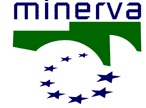
|
|
|
|
|
|
|
|
|
 |
Path: Home » Publications » Handbook on cultural web user interaction »
Table of contents » Chapter 4 » Chapter 4.3
|
| |
Handbook on cultural web user interaction
|
4.3 The Dublin Core standardIn the metadata domain, the standard defined by the Dublin Core Metadata Initiative (DCMI) is central. This organization develops and promotes the adoption of standards for the definition of metadata for the description of digital resources. DCMI has in particular developed a standard vocabulary for indicating the main properties of the most common online resources. Originally established for the description of bibliographic references, this vocabulary has been generalised and adapted to the description of a vast number of resources. Under the guidance of the NISO (National Information Standards Organization), the Dublin Core Metadata standard was established as the ISO 15836:2003 regulation. The publication of the ISO regulation forms an official acknowledgement of the use of the set defined by Dublin Core. The Dublin Core has been translated into over 20 languages and is used worldwide for integrating various types of information. The Dublin Core standard is composed of a group of elements for describing resources. This first group of elements, originally conceived for the descriptions generated by authors of web resources, was subsequently adopted by various communities, including museums, other public institutions and commercial enterprises. This helped to establish the necessary consensus for standardization at all levels. The success of Dublin Core is due to the ease of comprehension of its elements, its universally accepted semantics and the ease of its application to different languages. Dublin Core can be extended by using Refinement Elements: Qualifiers and Encoding Schemes. The Simple Dublin Core level has fifteen basic elements:
Using these elements we can describe a resource as a group of element/value couples. For example, to describe this chapter we could use the following sequence of element/value couples: DC.title=“The importance of using metadata”
All the elements of the language are OPTIONAL and can, if necessary, be REPEATED. For example, when there is more than one author the element DC.creator can be repeated. The Qualified Dublin Core level adds other elements and introduces a group of qualifiers that enable the semantics of the base elements to be refined.
The qualifiers make it possible to describe the information provided through the base elements in more detail. They are shown by the Element Refinements, elements that better specify certain characteristics, and by the Encoding Schemes, references groups for the interpretation of the values of the elements. For example, we can rewrite the description of this chapter with greater precision in the following way: DC.title=“The importance of using metadata”
In the description above we have indicated the type as text, referring to the standard Encoding Scheme DCMI Type Vocabulary, the format as text/html, referring to the MIME Type standard and the language as eng, referring to the standard. The DC.extent element was also used. This makes it possible to define the dimensions of the resource. The indentation of the extent element indicates that we are dealing with a supplementary indication (refinement) of the format element. The language defined by the Dublin Core standard is independent of any special regulation and we can choose the terminology that best suits us. We could, for example, make the language elements correspond to the fields of a table of a database or to the properties of an object in a programming language. The DCMI in any case provides some indications for the use of a common syntax for the description of online resources, such as for example a web page. This can be described in terms of Dublin Core elements expressed with the <meta> tags in the XHTML document of the same resource, quoting the source/UTL of the scheme adopted. For example, this article can be described with the following XHTML code, collecting the metadata in the <head> section of the XHTML source code of each page and using the <meta> and <link> elements: <head>
In this example, the <link> elements indicate the schemes used for the elements of the Simple Dublin Core (DC) and for the Qualified Dublin Core (DCTERMS), while each <meta> element corresponds to the element/value couples used in the first examples. Where possible, the data of some elements should be chosen from a “controlled vocabulary”, a series of terms which is carefully defined. This can greatly improve the search results, because computers are able to identify the individual words but find it difficult to understand concepts, associations, synonyms, etc. Without some level of terminology control, incomplete or incorrect metadata can lead to poor quality in the results of a search. Controlled vocabularies and thesauruses can be used through ENCODING SCHEMES. Example of the use of Dublin Core in the homepage of the Victoria and Albert Museum website Dublin Core is often too general to effectively describe very specific resources; we are often forced to personalize the scheme in order to satisfy some particular requirement. This leads to a situation where, even while using the same regulations, the metadata is not directly interoperable, unless by mapping the respective application profiles. While this may appear to be a limitation, it is in fact a strong point of Dublin Core. A user of Dublin Core is not excessively constrained in the description of the characteristics of a resource, but can create more detailed specifics if the information that must be described requires it. Dublin Core DCMI Metadata Terms Diane Hillmann, Using Dublin Core DCMI, Expressing Dublin Core in HTML/XHTML meta and link elements M. Moffat, ‘Marketing’ with Metadata: How Metadata Can Increase Exposure and Visibility of Online Content, |
|
|
|
|
Copyright Minerva Project 2008-09,
last revision 2008-09-19, edited by Minerva
Editorial Board. | |